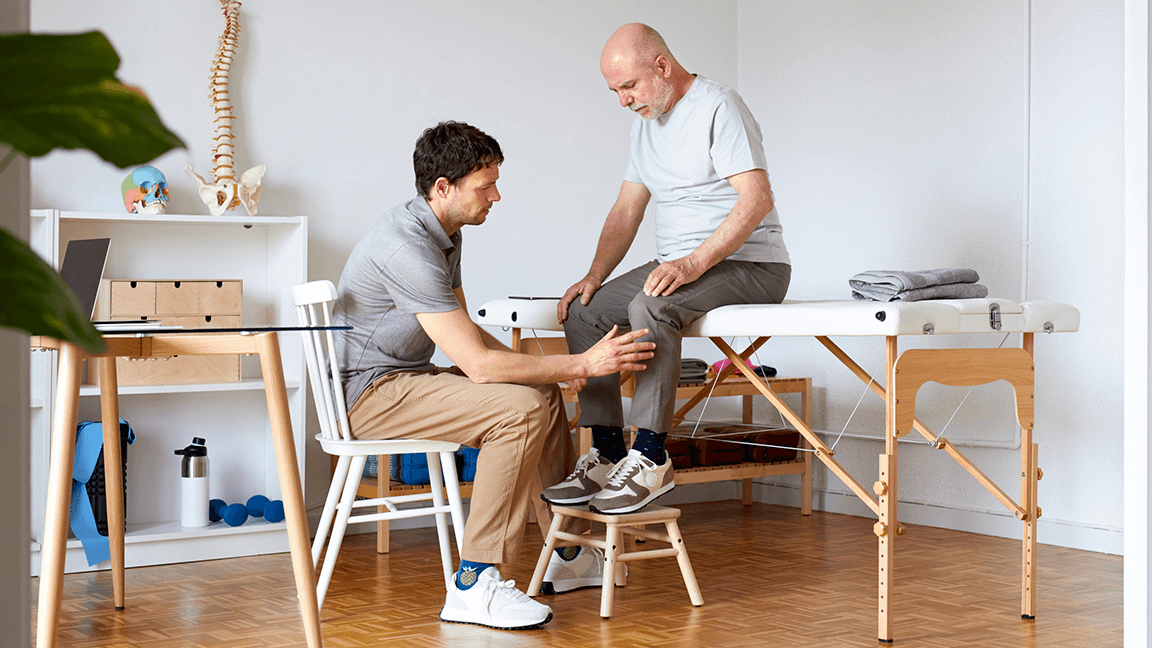Editor’s Note: This article is part two of a guest contribution from Patient Success Systems co-founder, John Woolf (MS, PT, ATC, COMT).
Empathy is a recurring topic for healthcare leaders who are looking to improve clinical outcomes by leveraging the power of patient connection. In part one, How Empathy Can Improve Clinical Outcomes, I presented some research that supports the fact that patients measure the value of their experience based not as much on the treatment technique but on the interpersonal connection they have with their provider. Business owners and healthcare leaders are recognizing that to increase the value proposition for their patients outpatient rehab therapists must develop new skills that empower them to more successfully connect with patients.
Patient engagement has become the new mantra in healthcare. The term patient engagement covers a large swath of mechanisms from scaled interaction through software applications to one-on-one patient interactions. Effectively connecting with patients can take many forms. However, the most powerful will be the one-on-one connection established between the patient and therapist. Knowing that this connection may determine whether or not a patient completes a plan of care with you increases the importance of doing it correctly. Some would argue that your relationship skills, like communication and empathy, are just as important as your technical skills. And, not unlike the risks associated with other technical skills we use in practice, empathy, if not done correctly, can have negative consequences for both the receiver (the patient) and the caregiver (provider).
Empathy is a cognitive-emotional process involving conscious and unconscious levels of the brain. Empathy is an innate human trait that compels us to help others in distress. Our brains do this by mind reading the situation and emotional state of the other, affect-matching or feeling the emotions of the other, and then engaging in empathic motivation or a drive to do something to help. Empathy is an evolutionary mechanism that keeps successful societies capable of connecting with and helping one another.
Although providers may receive empathy training that includes word expression and reflective listening, attempts to employ empathy skills without a deeper understanding of the mechanisms can be detrimental. As van Kijke, et al (2019) discussed1, there are dangers and harm associated with false empathy that an unaware healthcare provider can cause to a patient.
Empathy is not your sole responsibility
On top of the pressures associated with making an accurate diagnosis and performing effective procedures, providers think that they need to “do” empathy better by using the right words and body language. Although these skills are important, they fail to recognize how empathy is a relational process that is co-created with the patient. Empathy is NOT the provider deliberately trying to “feel with” the patient’s experience by looking for clues or asking “what does it feel like.” Rather, empathy is a co-created process where the provider and patient exchange emotional cues in mutual expressions of vulnerability and attunement.
Although the focus of care is always directed toward the patient, relationship-centered empathy requires the provider’s ability to create a context where the patient can also empathize with the provider. It is in this interdependent mutual sharing of emotional connection and caring that creates authentic empathy.
Avoid projecting and “pseudo” empathy
False empathy results from a technique often employed by providers when they attempt to “put themselves in the other person’s shoes.” This is a self-referential approach where we believe we can step into another person’s experience and expect to experience their emotional needs. It does not work because people experience similar events differently.
As an example, a patient may perceive a diagnosis as distressing, while another person may experience the same diagnosis as a relief because they now know the source of the symptoms1. Providers risk projecting their own perspective of the experience and thus missing the important needs of the patient. True empathy requires a clear “self-other” distinction wherein the provider is simultaneously aware of the patient’s emotions and their own emotions around the experience.
Avoid emotional contagions
Without awareness training as part of patient engagement training, providers often unconsciously “catch” the patient’s emotions like a cold or flu. A patient may feel comfortable about expressing the sadness associated with their situation which may trigger similar emotions in the provider.
Our ability to “feel” the emotions of another person is enabled by the mirror neurons system, a sophisticated neural network that reproduces the emotional state of another. For example, it’s hard not to laugh when someone is laughing hysterically. Therapists who have not been trained to be aware of their own emotions and the emotions of their patients may not recognize that they are “in” the emotions of their patients. The consequence is that they carry the physiology of the emotions and can feel exhausted and burned out at the end of the day.
Avoid the backfire effect
Empathy works best in the context of a trusting relationship. Empathy offered at the wrong time or in an awkward or inauthentic way can exacerbate the patient’s distress. Patients, and all people, have built in social sensors that can detect providers who are not truly engaged.
It must be recognized that the patient-provider engagement is initially structured upon a power imbalance, the patient holding the more vulnerable position. Patients can easily interpret a provider’s disingenuous or unskilled attempt at empathy to be patronizing or intrusive. In their attempt to connect, providers will attempt to touch emotions that patients are not yet ready to share or attempt to connect without normalizing the power dynamic by disclosing a little about themselves. A healthy relationship requires both the patient and provider to connect with each other using some degree of vulnerability.
Proper empathy is co-created, power-aware, and emotionally interdependent
Empathy is a basic human drive that keeps you deeply engaged with others and driven to help them in times of distress. Healthcare providers are in the business of helping people in times of distress2. Unfortunately, very few physical therapists are trained to hear patients’ stories and often fail to solicit the patient’s agenda or pick up on a patient’s clues. Instead, they limit the necessary engagement to connect at the right level to create a meaningful relationship wherein empathy is not something we do to the patient but is rather co-create. Doing empathy properly can minimize the emotional drain providers often experience and create the foundation of a successful therapeutic alliance which leads to better outcomes.
—
References:
1. van Dijke, J., van Nistelrooij, I., Bos, P., & Duyndam, J. (2020). Towards a relational conceptualization of empathy. Nursing Philosophy, 21(3), e12297.
2. Egnew, T. R. (2005). The meaning of healing: transcending suffering. The Annals of Family Medicine, 3(3), 255-262.
For more information, email the author at jwoolf@patientsuccesssystems.com.



Comments